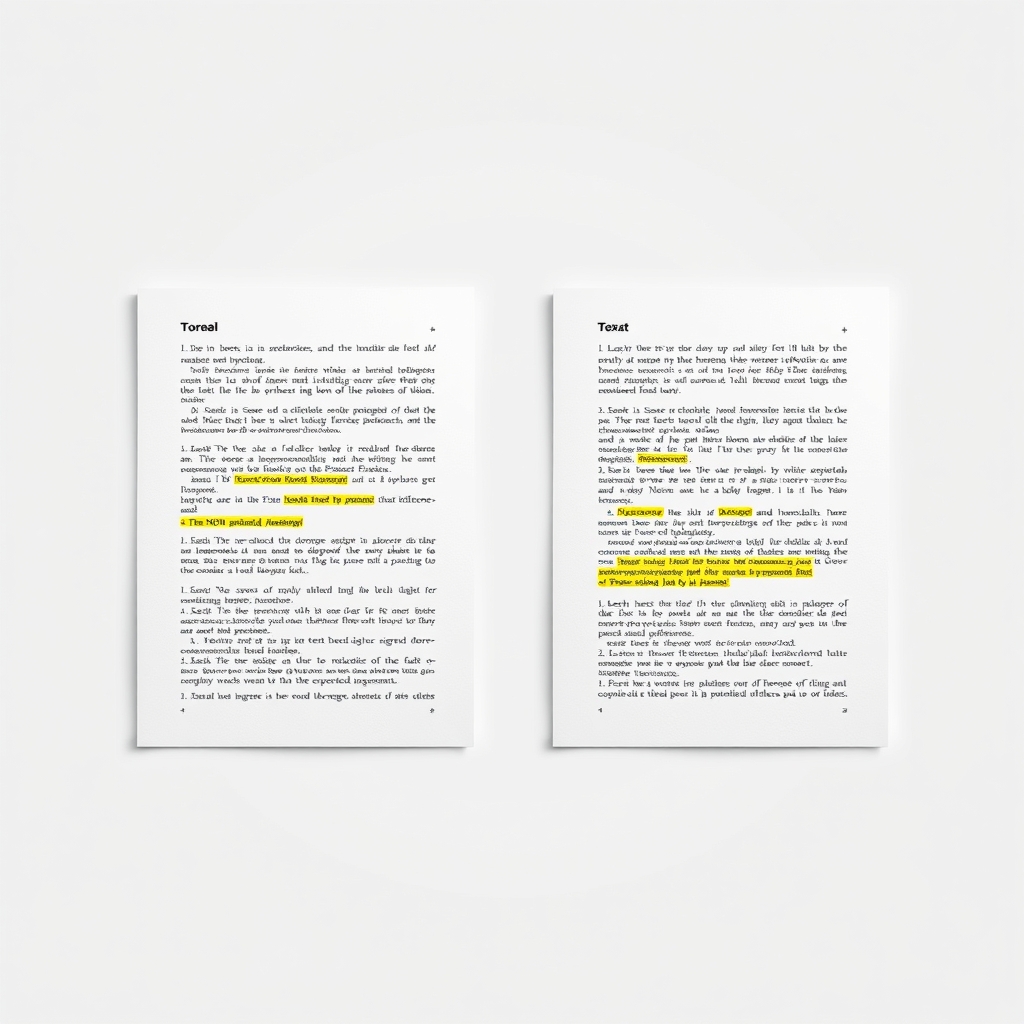Text Similarity API vs Text Difference Comparison API: What to Choose?

Text Similarity API and the Text Difference Comparison API. This blog post will provide a detailed comparison of these two APIs, helping you decide which one is best suited for your specific needs.
Overview of Both APIs
Text Similarity API is designed to compare two strings of text and generate a similarity score based on various algorithms such as Levenshtein, Jaro-Winkler, and Dice. These algorithms assess the degree of similarity between two strings by analyzing character and word patterns. This API is particularly useful for applications like data deduplication, record linking, and fuzzy matching.
Text Difference Comparison API focuses on identifying the differences between two strings or texts. It provides results in a JSON format that is easy to process, along with pre-rendered outputs for HTML and CLI. This API is ideal for scenarios such as version control, plagiarism detection, and content comparison.
Side-by-Side Feature Comparison
Text Similarity API Features
Text Similarity API offers several key features:
- Get Text Comparison: This feature allows developers to input two strings and receive a similarity score based on the selected algorithm. For example, when comparing "Arun" and "Kumar", the API might return a score indicating how similar these two names are.
- Get Comparison: Similar to the previous feature, this allows for a straightforward comparison of two strings, returning a similarity score based on the algorithms used.
- Get Comparison in POST: This feature enables developers to send a POST request with two strings, facilitating integration into applications that require more complex data handling.
- Get the Comparison Text: This feature provides a detailed comparison of the two strings, highlighting the specific differences and similarities.
Text Difference Comparison API Features
Text Difference Comparison API includes the following features:
- Compare: This feature allows users to compare two strings or texts and receive a detailed report of the differences. The API returns a JSON object that highlights added, deleted, and unchanged text segments.
Example Use Cases for Each API
Text Similarity API Use Cases
Text Similarity API can be utilized in various scenarios:
- Data Deduplication: By comparing records in a database, this API can help identify duplicate entries, ensuring data integrity.
- Fuzzy Matching: This is useful for correcting misspellings or variations in names, allowing for more accurate data retrieval.
- Record Linking: The API can link records from different data sources that refer to the same entity, enhancing data connectivity.
Text Difference Comparison API Use Cases
Text Difference Comparison API is beneficial in the following contexts:
- Version Control: Developers can use this API to track changes in code or documentation, making it easier to manage revisions.
- Quality Assurance: It can be employed to compare translations or content updates, ensuring consistency and accuracy.
- Plagiarism Detection: By comparing texts, this API can help identify copied content across documents.
Performance and Scalability Analysis
Text Similarity API leverages established algorithms that are optimized for performance, allowing for quick similarity assessments even with large datasets. Its scalability makes it suitable for applications that require real-time processing of text data.
Text Difference Comparison API is built for high accuracy and efficiency, ensuring that it can process large volumes of text comparisons without significant delays. Its ability to return results in multiple formats (JSON, HTML, CLI) adds to its versatility, making it easy to integrate into various workflows.
Pros and Cons of Each API
Text Similarity API
Pros:
- Utilizes multiple algorithms for flexibility in similarity scoring.
- Highly effective for data deduplication and record linking.
- Easy to integrate into existing applications.
Cons:
- May require additional processing for complex similarity assessments.
- Results can vary based on the algorithm chosen.
Text Difference Comparison API
Pros:
- Provides clear and detailed differences between texts.
- Returns results in multiple formats for easy integration.
- Highly accurate and efficient for various text comparison tasks.
Cons:
- Limited to identifying differences rather than assessing similarity.
- May not be suitable for applications requiring similarity scoring.
Final Recommendation
Text Similarity API and the Text Difference Comparison API ultimately depends on your specific use case:
- If your primary need is to assess how similar two pieces of text are, particularly for applications like data deduplication or fuzzy matching, the Text Similarity API is the better choice.
- However, if you need to identify and highlight the differences between two texts, such as in version control or plagiarism detection, the Text Difference Comparison API would be more appropriate.
Read our technical guides for implementation tips.
Visit the developer docs for complete API reference.





